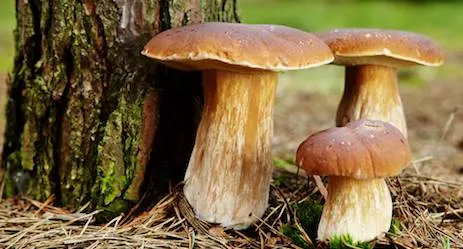
A Celebration of Fungoid Fiction
This is going to sound a little strange, so bear with me. I really love weird fiction (it’s a loose genre that borrows elements from other genres like science fiction, dark fantasy and horror) – and one of the subject weird fiction really loves is fungus. Seriously, weird fiction cannot get enough of odd mushroom stories. I like to call this little sub-genre ‘fungoid fiction’ (mostly because of the alliterative ‘F’). One of the key traits of weird fiction is that it makes its readers feel unsettled and uncomfortable – and nothing is more unsettling than fungus! For one thing, it doesn’t fit neatly into our animal or plant categories; it’s actually more closely related to us on the ‘animal’ side, but it’s not conscious or sentient. And let’s be honest, there’s something about mushrooms that’s just kind of gross.
The traditional starting point for fungoid fiction is the short story The Voice in the Night by William Hope Hodgson, published back in 1907. This story sets the stage for future fungoid works by telling the tale of a shipwrecked man who stumbles upon an island covered in a thickening, spreading fungus, which slowly begins to grow on his skin and encase his whole body. This element of body horror is standard for fungoid fiction. With many tales of fungus and fungoid figures, there is often a threat and overwhelming fear of contamination prevalent within the plot. Two contemporary novels that deal with the gross contamination factor are The Beauty by Aliya Whiteley and The Girl with All the Gifts by M.R. Carey. These two novels portray fungal contamination very differently, though. The Beauty is a lyrical and eerily written tale about a secluded village where all the female inhabitants have died, and the graves of the women have sprouted a peculiar yellow fungus. This fungus begins takes the shape of faceless fungoid women, who the men of the village are both disgusted by but also lust after. Things get weird. The Girl with All the Gifts also deals with the threat of contagion, but the fungus in this story is decisively dangerous, where a zombie-like state follows any contact with the fungus.
I think this fear of contamination within fungoid fiction is fairly easy to understand. There’s something pretty disturbing about fungus – you can get some pretty nasty real-life fungal infections on your skin and nails, which not only looks foul but smells awful! (Seriously, just think of athlete’s foot.) We can also happily eat mushrooms (even though some can poison and potentially kill us), but some people can’t stomach them – I’ve heard so many complaints about mushrooms that say it’s not the taste that’s the problem, it’s the texture. Mushrooms are just unavoidably gross!
The panic over fungoid infection isn’t always limited to the body, however, as fungus can always pose a threat to the landscape and wider ecosystem. Hayao Miyazaki’s manga Nausicaä of the Valley of the Wind deals with the fallout an environmental catastrophe involving a toxic fungal take-over, threatening to end all human life. Another story where the landscape is altered by fungus is in Jeff VanderMeer’s noir-style novel Finch, except rather than a total desolation of the landscape, VanderMeer’s book reads more like a fungoid occupation of the environment. Finch takes place in the city of Ambergris, where the fungus-humanoid species, the gray caps, have taken over and spread their influence across the city.
These books are just a tiny slice of the (surprisingly large) amount of fantastic fungoid fiction that’s out there. The rest of it is all sitting there, simply waiting to be devoured! I just hope you’re not too grossed out by mushrooms to give it a taste – even if you find it hard to celebrate the somewhat chewy texture!











